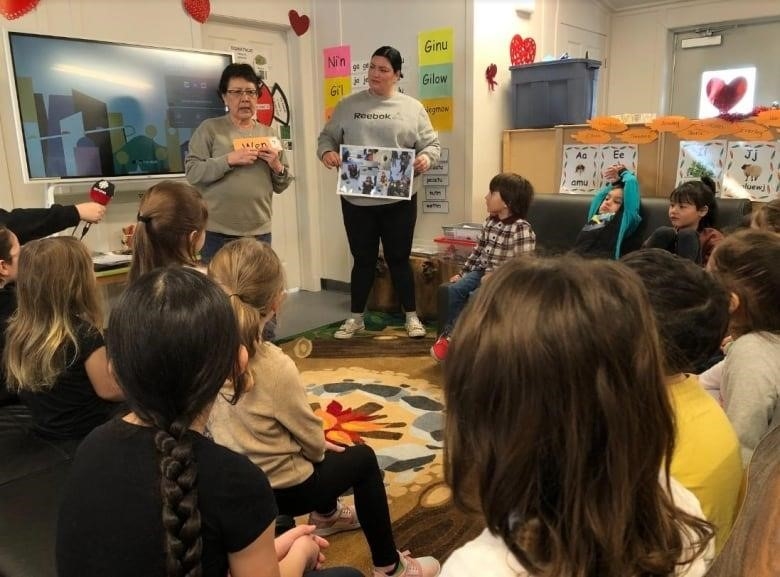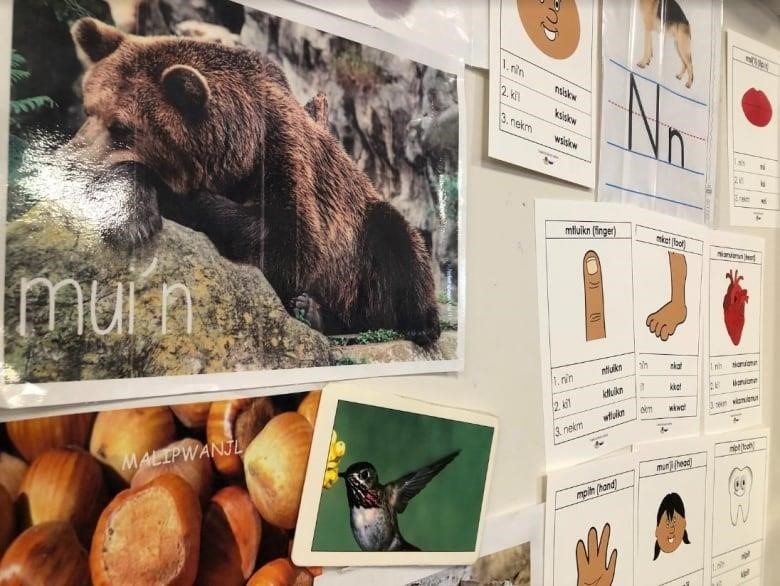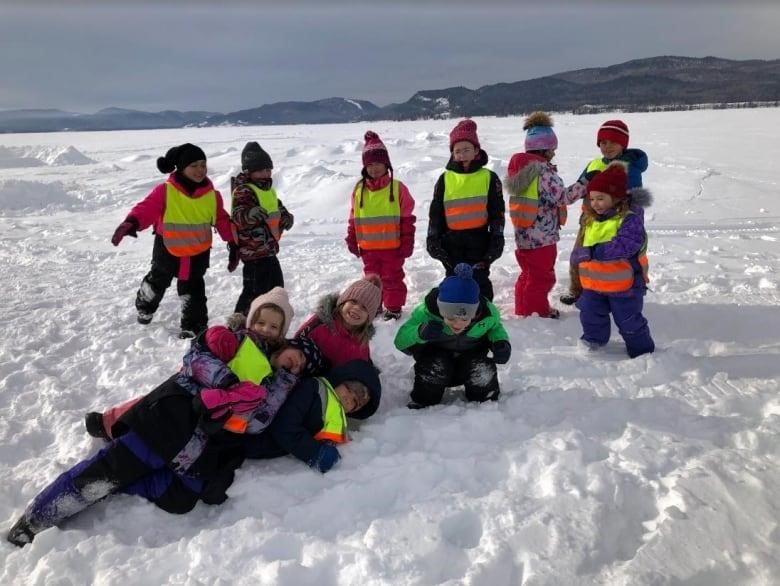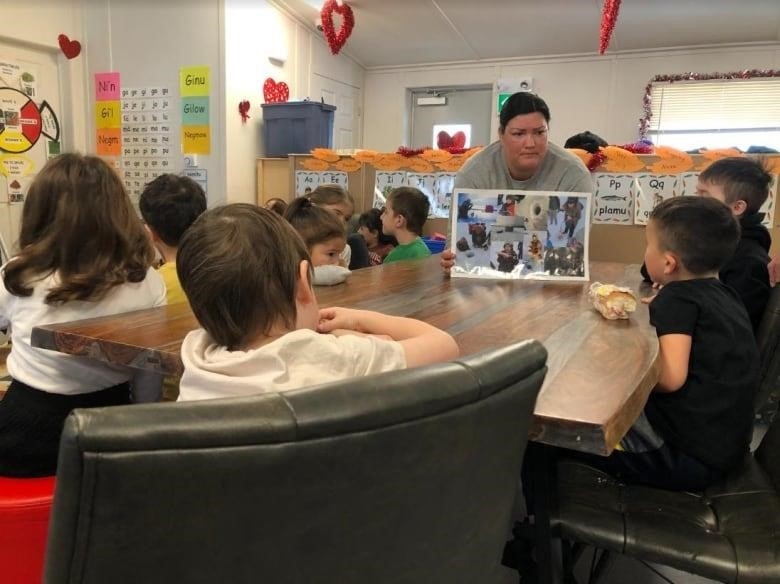The main goal of the Forest Kindergarten program is to help kids improve their language skills
On a warm, sunny day in February, Brenda Germain picks up a big hand drill and tells her students to gather around.
She gives the kids a drill and shows them how to cut through the thick ice in Chaleur Bay on the Gaspé coast of Quebec.
“Base concumi — Joyce Germain, who works with her and is also her aunt, tells the students, “The ice is this thick,” as they kneel over the hole to catch smelt or other fish.kaqpesaw.
The whole class trip is going to be in Mi’kmaw, a language Brenda Germain “didn’t speak a word of” just 10 years ago.
She said, “For 35 years of my life, I kept thinking, ‘Man, I missed the boat.'”
But in 2018, she switched roles in the classroom, which changed her life and her teaching career in a big way. Brenda Germain went to the Elawsimgewei Gina’muo’guom Adult Education Center in Listuguj, Que., to take part in the Mi’kmaw immersion program for adults.
In addition to the classes, she said, she learned the language “just by going out on the land with Miss Joyce every day.”
“It’s very important to let people know that you can start something at any age.”

Benefits of outdoor educatio
She can now speak Mi’kmaw well and is also leading the way in Listuguj to bring back the language. Brenda Germain was a big part of making the Mi’kmaw immersion-based Forest Kindergarten program, which takes the classroom outside.
She first told the school’s principal about the idea after watching a short video about learning outside in Germany and the Netherlands. Yes, came the answer the very next day.
In the forest near the town, a base camp was built. The kindergarteners meet there at the end of the day to talk about what they’ve learned on their field trips.
Brenda Germain said, “The outdoors and the Mi’kmaw way are both parts of who we are. You can’t separate the two.”
Miss Joyce is Brenda’s aunt, and she has also taught the Mi’kmaw language for 23 years. She was involved with Mi’kmaw learning at Alaqsitew Gitpu School from the beginning.
She said, “My dream was to teach the language, and it has always been a part of me and our community.”

Joyce and Brenda Germain also do “mini-lessons” in small groups with the help of two teaching assistants. They look at the wildlife and nature they see around them.
Brenda Germain said, “Instead of having one teacher in front of the class and 25 kids learning the same thing at the same time from the same person, they can explore the outdoors.”
“Ta’s’gl Uggwatl geggungl? how many legs do they have? Talamugsit? — what colour is it?”
Soon, the teachers saw how easy it would be to fit outdoor learning into the school curriculum by having students talk about what they learned outside in class.
Joyce Germain said, “That’s where they learn all their words and how to speak the language.”
Brenda Germain said that they used to spend more time correcting behavior before outdoor education. Now, both teachers think that the kids are more eager to learn because they are having fun.
Joyce Germain said, “I have a lot of students with learning disabilities or other disabilities, like ADHD or autism, and they do much better outside than they do inside.”

Passing over the bato
Joyce Germain said she is proud of how quickly her niece Brenda learned the Mi’kmaw language and is glad Brenda will be able to take over when she retires in a few years.
Joyce Germain said, “She has a lot of promise for our community and is a good thing.” “I think she will do great on the program.”
Brenda Germain said she will miss having Joyce’s knowledge around her every day, but she thinks she has learned enough from teaching with her aunt “to hold the fort.”
“She’s great at kicking me out and telling me, ‘Go, Brenda, you can do it,'” she laughed.
“That’s how it should be. She should be happy to retire, but we need to keep her around as a source of knowledge and an expert,” “said Brenda Germain.

When Joyce leaves, Brenda Germain and her colleagues will continue to teach a new generation of students to count, name animals, and speak about their feelings in Mi’kmaw.
A big step in itself, Brenda Germain recognizes.
“I never in a million years thought that when I sat down with my kids to help them with their homework, it would all be in Mi’kmaw.”
